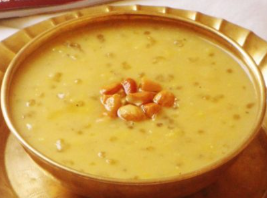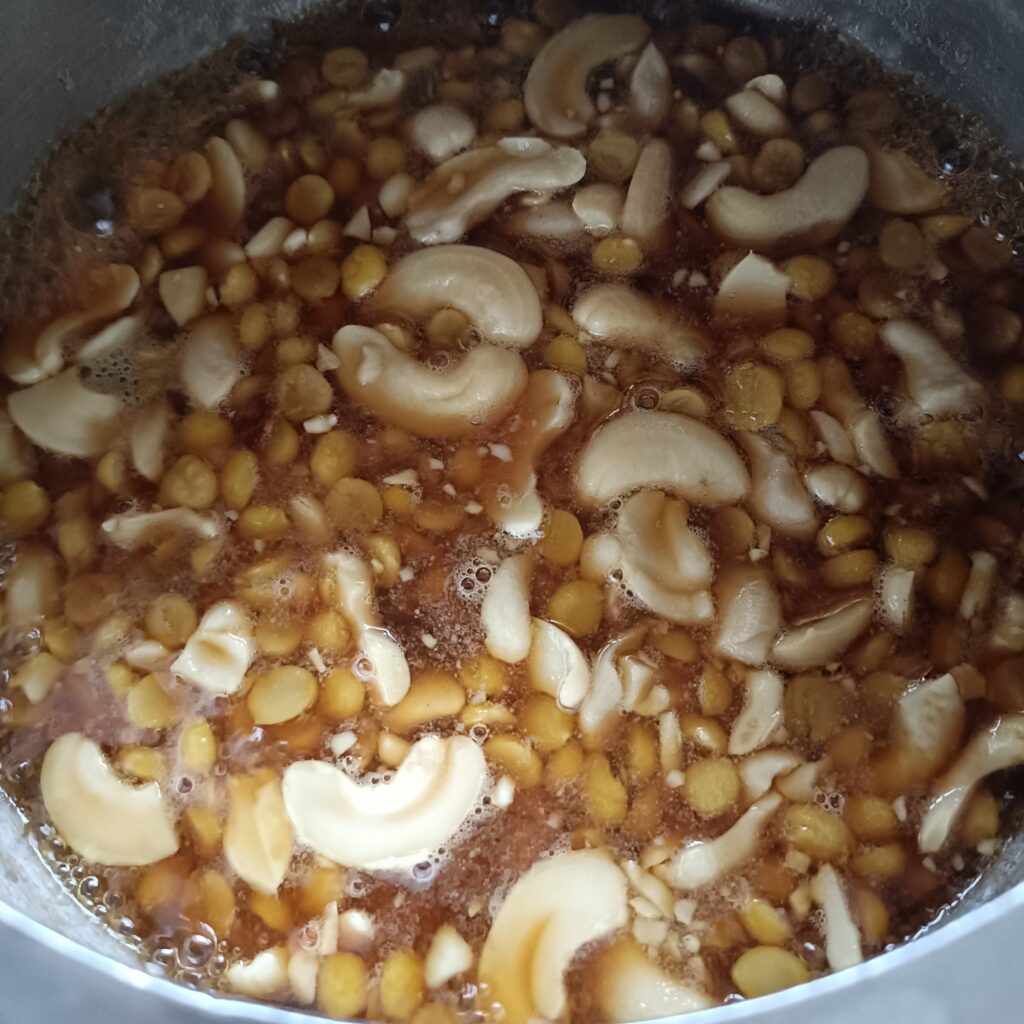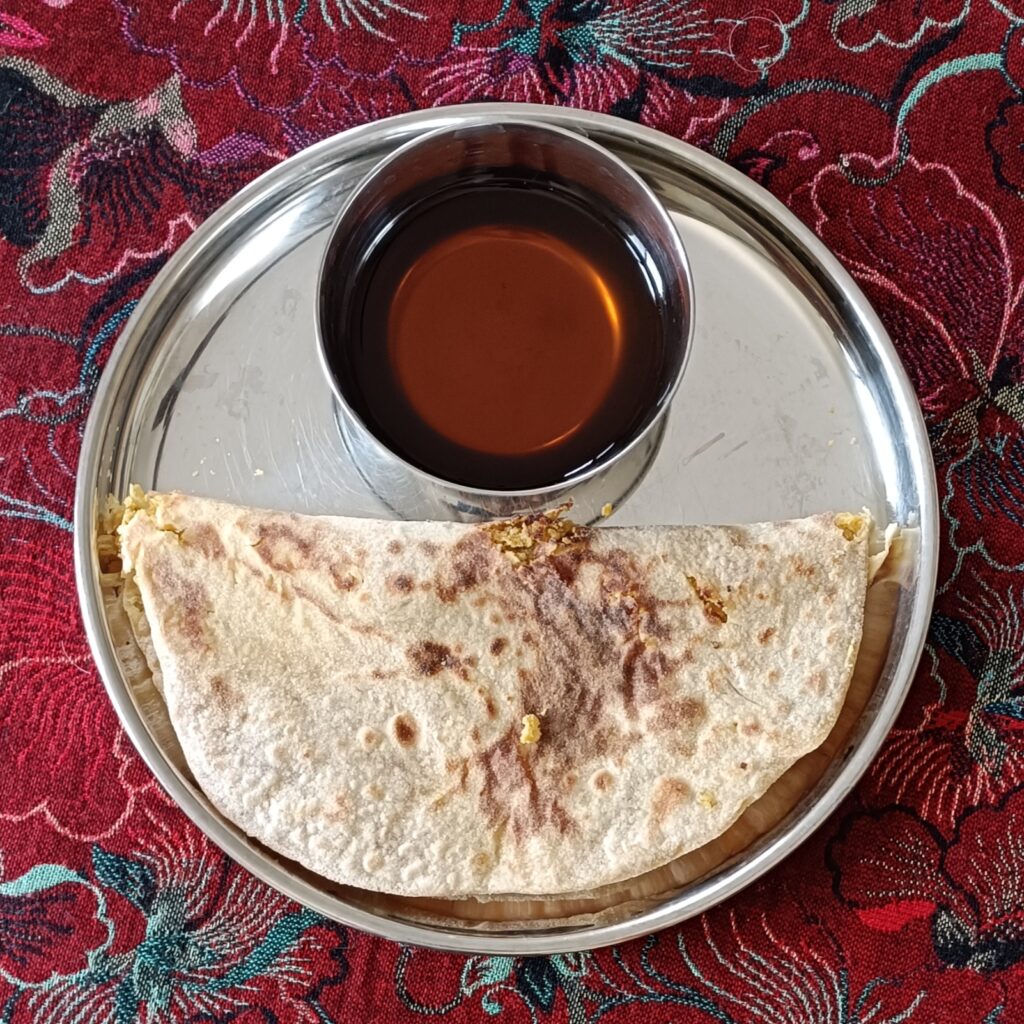Rassa Polay (Sweet Rice Pancakes)
Recipe credit: Darshana Muzumdar Serves 4 as part of a traditional Indian meal. Polay is the Marathi or Konkani word for dosas or pancakes. Pola
Home » Archives for Darshana Muzumdar » Page 8
Recipe credit: Darshana Muzumdar Serves 4 as part of a traditional Indian meal. Polay is the Marathi or Konkani word for dosas or pancakes. Pola

Bananas are well known for their health benefits and are therefore an excellent food for babies and children too. They are rich in potassium and magnesium that may help manage blood pressure and in turn diabetes, lower the risk of stroke, and keep your bones healthy. The soluble fibre in them can help keep your cholesterol and blood pressure in check, and help ease inflammation. A ripe banana is a good source of prebiotics or in other words the carbs that feed the good bacteria in the gut, helping to keep it in a healthy condition, pectin (another fibre) may help prevent constipation and soften stools, and the relatively high content of Vitamin C in them helps protect you from the effect of free radicals.
It’s important to note that you should always have them on an empty stomach, especially to reverse lifestyle diseases like hypertension and diabetes.

Poha is made by soaking the rice and then flattening and drying it. It can be considered to be an uncooked form of rice yet doesn’t really need to be cooked to be consumed. It has a reasonable amount of carbohydrates, some potassium, sodium and protein, and is easily digested.
Coconuts have been grown in India for centuries and have traditionally been used in both savoury and sweet dishes. Coconuts are considered a source of healthy fat, but the fat will add up if they are consumed in the form of coconut milk or oil. Also, they contain small amounts of saturated fats and so should be eaten in smaller quantities. Eaten grated or in pieces, they are a great source of fibre and so help digest the fat in them more easily and also keep the quantity consumed lower. The fat in coconuts is easier for the human body to digest and they don’t contain cholesterol like animal fats Coconut also contains iron, manganese, copper and magnesium, which aid in protecting against disease and ease inflammation in the body.

Sweet potatoes are not only delicious to eat, but they are also very rich nutritionally. The high content of vitamins A and C, calcium, magnesium and potassium all help to improve the immune system and the functioning of organs like the eyes, heart and kidneys. They are also rich in antioxidants that help to take care of free radicals in the body and keep it younger. They may help in reversing diseases like diabetes, heart disease, and even cancer. Apart from that they prevent adding unhelpful and unnecessary weight. They are best had boiled or steamed to keep the glycemic index low.
Coconuts have been grown in India for centuries and have traditionally been used in both savoury and sweet dishes. Coconuts are considered a source of healthy fat, but the fat will add up if they are consumed in the form of coconut milk or oil. Also, they contain small amounts of saturated fats and so should be eaten in smaller quantities. Eaten grated or in pieces, they are a great source of fibre and so help digest the fat in them more easily and also keep the quantity consumed lower. The fat in coconuts is easier for the human body to digest and they don’t contain cholesterol like animal fats Coconut also contains iron, manganese, copper and magnesium, which aid in protecting against disease and ease inflammation in the body.

Moong dal is packed with protein and is an integral part of the Indian diet. It is rich in potassium, which helps lower blood pressure and protects against muscle cramping. It also contains minerals like magnesium, iron, and copper and dietary fiber. When eaten, moong dal helps produce a fatty acid called butyrate in the gut. This helps maintain the health of the intestinal walls. The dal has anti-inflammatory properties that prevent and accumulation of gas. Rich in B-complex vitamins, moong dal helps your body break carbohydrates down to glucose, and produce usable energy for your body. It cooks fast and is light and easy to digest. So all in all, it’s a great ingredient to include in your diet more often than not.

Recipe credit: Darshana Muzumdar Serves 6 to 8 people as part of a traditional Indian meal. Ingredients Method For the Whole-Food Plant-Based (WFPB) version: Use
Rice is one of the oldest cereal grains in the world which has been grown for at least 5,000 years and almost all of the rice today is cultivated in Asia. It is also a staple food for more than half the population of the world. There are thousands of types of rice and many are becoming rare to find. But mostly rice fits into two groups: white (polished) or brown (whole grain). Though brown rice offers more health benefits, white rice is what is used more commonly. Brown rice comes in a variety of shades, including reddish, purplish, or black. Rice is primarily composed of carbohydrate in the form of starch, which makes up almost 80% of its total dry weight. The body digests sticky or starchy rice faster than other long grain varieties like basmati. During the processing of white rice, the grain loses the bran, or seed coat, which contains most of the fiber, and so brown rice contains a higher amount of dietary fiber than white rice.
This traditional sweet dish is mostly made when we have guests over or for some special occasion like a birthday or something similar. It’s easy to make and loved by both young and old alike.

Chana dal, or split chickpeas, is a nutritious legume rich in protein, fiber, and essential minerals, and has been used traditionally for generations. It has several health benefits as per every 100 grams, it includes around 360-400 calories, 20-22 grams of protein, which is an excellent source for muscle repair and growth, 60-65 grams of carbohydrates, and 10-12 grams of fibre, which promotes healthy digestion and can help prevent constipation. It has only 2-4 grams of fat so supports heart health. It also contains several vitamins like B vitamins (B6, folate, niacin, thiamin, riboflavin) and minerals like iron, phosphorus, magnesium, manganese, and copper. These are good for a healthy skin.

Sesame seeds are rich in fibre, which helps in improving digestion and may also help in reducing the risk of heart disease, some cancers and prevent putting on excess weight. Though sesame seeds contain saturated fats, the majority of fats in them are polyunsaturated and monounsaturated fats or good fats that may help in lowering cholesterol levels. Roasting sesame seeds reduces the impact of the oxalates in it that may inhibit the absorption of other minerals in them. It’s a great source of plant based protein especially in the hulled (though it reduces the fibre and vitamin B content) and roasted seeds as it helps in the absorption of this nutrient. It is also well known to be rich in calcium, that’s mainly found in un-hulled seeds, and the absorption of this nutrient is improved by soaking, roasting, or sprouting the seeds.